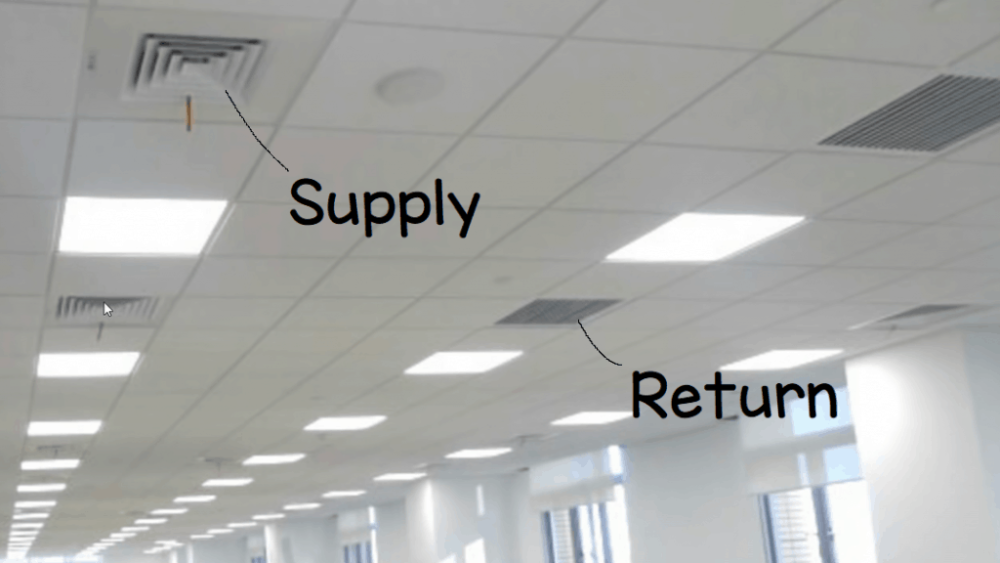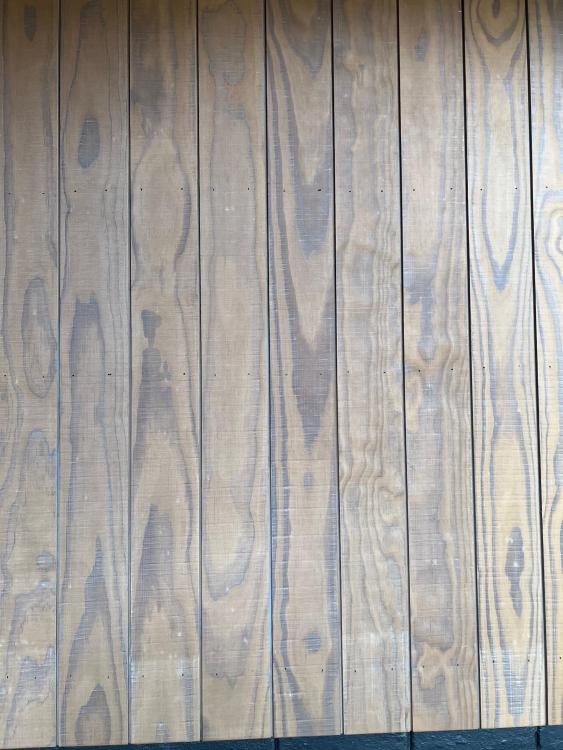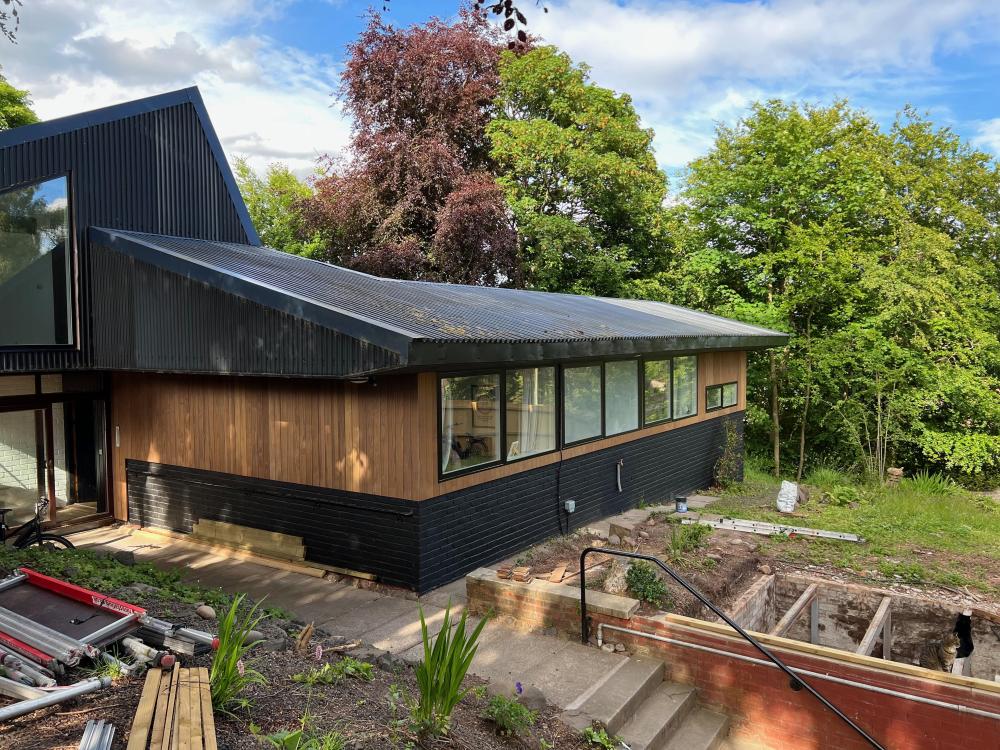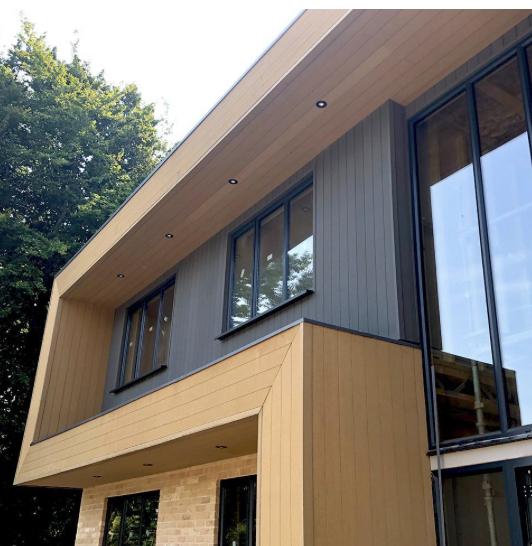Leaderboard
Popular Content
Showing content with the highest reputation on 08/11/22 in all areas
-
not just imagination but perhaps, with a few exceptions, also: moral fibre / creativity / intellectual capacity / any interest in or empathy with the people they are supposed to be serving / leadership skills / negotiation skills / emotional intelligence / persuasion capabilities / sense of economic reality / ability to share and adhere to the truth - shall I go on?3 points
-
Contaminated with what would be my first question, then see if that could be treated. A small scale take on a slowsan filter or UV or what not. If there is an existing mains supply locally, then this could possibly be used to feed a potable water buffer tank(s) with booster which could be filled say over night every night (timed pump/level circuit). We do a lot of stored boosted water for flatted developments, A to boost pressure and B where water supplier are not happy about the new connection capacity requirement. We have a small block of 12 flats where the water mains is existing and undersized, a small tank room and a booster pump has solved this. It may not work for many many reasons, but I am sure a system could be had to provide potable water for <150K. Could the existing supply be upgraded cheaper? Friends upgraded a 250m supply to their house with the use of a mole to run new line, worked out quite cheap, another friend with a farm had a new line pulled in through his existing line with a splitter mole which is pulled by a draw wire through the existing pipe and splits it as it goes pulling behind it the new line.2 points
-
Highly recommended. we don't have one on what is effectively a £400k job. My pet subject. In my business we allocated a fixed, and low, number of skips, but also had a plan for what could go in them and what to do with the rest. On occasions I had skips emptied and refilled properly: Air is very expensive to cart to tip and pay landfill on, and the skip companies make a lot by sorting and consolidating. Site manager had to fill in a form of approximate contents.....so it became easier to think rather than dump. A couple of examples of savings. A few contractors really bought into this, and I once found our electrician's boss flattening lighting boxes and tying them up neatly, reducing volume by 90%...he then took them to a recycling centre. Another company MD (we were in a waste reduction group) banned skips on a house project and used hippo bags, allocated to different products. His surprise saving was in battens. Prior to this the roofers got to the eaves and sawed off the timber , and it fell to ground then was skipped. With Hippo bags they didn't fit so might as well take them up and reuse as cut to put in the bag. Similarly, a bag full of half bricks is fairly obvious and unjustifiable. Damaged bricks can obv be hardcore. In a skip they disappear. In our study we found that the cost of a skip is not £300 or whatever, but about £2,000 when you included materials that were being dumped without thought , or shouldn't have been bought in the first place. Timber packaging from steel deliveries we gave to schools for woodwork if we hadn't used it for shuttering. The big contractors claimed and boasted of 'zero waste'. But it wasn't true....they defined zero as 'what couldn't reasonably be recycled'.2 points
-
At first it was the US electing Trump that started me thinking: what wheels have fallen off to get us into this dreadful place. Then after a few more bits of undercarriage fell off in the UK, it struck me how just much bullshit was backed-up and how it was now being liberally spayed around the world. If bullshit is allowed to go unchecked, nature has a way of making the consequences felt (eventually) even if people are too far up their own arses to notice or care. Much like how water has a way of introducing a dose of reality despite your plumber or roofer's bullshit. Climate change, Brexit, Ukraine and even Covid can all be seen clearly through this lens.2 points
-
Could it be to make the tube long enough that a small hand/arm cannot get up the tube when the fan is running? Might be a safety through distance thing. I see no reason technically why not.2 points
-
Super expensive Intello Plus for me but I’m a sucker for marketing! 😂 figured I only want to do this once so why skimp in the fabric of the building. do a search on here, there are many threads on the subject.1 point
-
More in reportage terms ... - Longer life should be a benefit, if the reputation is warranted. Mine and the freezer are only 8 years old and fine, and had their first 2 years as showroom demonstrators. - Spare parts have been available, and service good. They sent me a couple of bits for free. - Seem to have a greater range of controls than other fridges I have had. - Both my fridge and freezer have "boost" options which are quite vigorous. If I forget the freezer is on SuperFrost, it ends up at -30C. - On the fridge, I would say check carefully for any of the double-plus-good crisper draws which claim to improve the fridge life of veg. You may want it. It is alleged by some that veg are dropping in quality post-Brexit. I got buried under a dogpile of self-identified remainiacs when I suggested a better fridge (a Liebherr) to a certain writer for the G.1 point
-
1 point
-
So that will only contaminate the surface - is it a shell lined borehole ..? There are plenty of filter systems for nitrates using ion exchange and they are regenerated using salt solution. Certainly a lot cheaper than mains !1 point
-
1 point
-
Loads on FB marketplace. Newark and Worksop, all around the £30-40 mark. See if you can find a black one as you don’t get algae growth in them1 point
-
I'd look to understand the contamination problem first. Refurbishing the existing borehole or putting in specific treatment may be a more economical efficient. I've not seen any spec from any water company for above ground supplies; frost damage would be a concern.1 point
-
What is the water contaminated with ..? Could find that shell boring a new borehole would be cheaper. Also worth noting you need potable water to all inside taps - don’t forget things such as cleaning teeth etc !1 point
-
Most of the £150k cost will probably be digging up and reinstating the road. Who owns the road and is there an alternative route across fields to the main?1 point
-
Try Gumtree. Search within say 30 or 50 miles. Ask what it's been used for. Wants to be something water soluable you can put down a drain.1 point
-
I have an MCS system but it was installed after FiTs. Because it is 3-phase I couldn't get a smart meter to see my exported electricity, so couldn't sign up for export payments. Now that I have a smart meter I still cannot get export payments as Octopus want the DNO letter which I don't have. I suspect the way around it is to apply again to the DNO, ut it is quite a faff.1 point
-
One our site managers called me 'the skip inspector'. That other MD I mentioned, also took to allowing a limited number of skips per project. He then found that site managers were hiring grab lorries instead....hardly buying into it. But he did spot this so it was stopped. One of our managers got the message, but dealt with it by squashing down the contents with a digger. Good idea but again hadn't got the fundamental principle. He was rather good at recycling copper from a demo though....none of that in the skip. Happy to pass on more tips on request....I got an award for it. Actually it was more for efficiency of design, but it is all waste whether dumped or used unnecessarily.1 point
-
1 point
-
I just read their brochure. I assume the Moso bamboo is different from the stuff your chippie is talking about. According to the Moso brochure the bamboo planks are produced using a thermal modification process and then compressed with a binding glue into planks. They claim a durability class 1 and state it’s harder than most hardwoods. The Gripsure company use it for their decking but have only become a cladding agent in the last few weeks. Edinburgh zoo uses their decking in some of the animal enclosures so I’ve unwittingly walked on it.1 point
-
Agreed, TH should be more open and upfront about their roofing system so the work that needs to be done is planned in advance. We have used aluminium tape over most of the panel joins internally. To top that off we are using double foiled bubble wrap as an extra layer of insulation and barrier before plaster boarding. I think if we do not do this there would be a very high risk of condensation through small gaps between panels where glue may not have been applied. To illustrate, we had a LOT of water coming in after the panels were set up. Huge amounts were due to dormers edges, which were formed by cutting the panels and glueing them together, not being fully water tight (and hence not air tight). But a couple of places we could actually see light coming in from the sky where there were no dormers. Just panels not being put up properly. We wised up to this only because we read the technical manual and had water ingress early on. The installation was done by TH, so we could easily have missed it had we relied on them fully. But also bear in mind you can lose air through door and window reveals not being properly sealed…. See the videos below for fun! We only managed to stop the leaks once the roof membrane was fully on, no amount of PU foaming inside or out was working. Fortunately there was enough rain in May and and June to realise we had an issue!! IMG_1421.MOV1 point
-
1 point
-
Our plumber recommended least a 12 kW ASHP for our house. Even after I showed him the heat calculations, he was still concerned that the house temperature would drop to uncomfortable levels when recharging the DHW on cold winter days. The 5 kW ASHP we installed has been perfectly adequate for nearly 7 years now.1 point
-
If the batteries are AC coupled then they have the potential to feed into the grid in addition to the 6kw PV you have approval to export. If your batteries can push out 5kw and your PV push out 6kw then your DNO will want to assess you potential export as 11kw.1 point
-
I am in the process of framing my roof on an ICF construction. I used UB steels for the ridges and 10mm flitch beams for the valleys and hip. The rafters will be 8x2s filled with mineral wool and 150mm PIR on top to create a warm roof. It will be slightly cheaper than raised tie trusses because I'll be doing it with a chippie friend. Loft trusses lost me 2m on the width of the rooms and raised tie trusses lost head height. If the cost is roughly the same, I'd go with steels and a cut roof, you can then maximise the area of the loft.1 point
-
I was looking for a sustainable cladding product and a self-build friend in Fleet suggested Bamboo from Moso. I have samples, which are nice, and a price which is good. Not placed an order yet. I have spoken to Gripsure a couple of times and they have answered all my questions.1 point
-
1 point
-
Yep. It’s what I meant but obviously didn’t word it well! That’s why I thought the document would do the talking for me. 😉 for me it’s perfect as I can start small as funds are rapidly running out and then if I find I need more storage or higher discharge I can add batteries and another Pod to suit. when I finally get this ******* house finished and the batteries all hooked up I’ll report back as to what it’s like and how it all performs. But that could be a while! 😂1 point
-
To be fair to all installers, common sense is only common amongst those who have been through the problem and solved it already. It is surprisingly uncommon otherwise. to illustrate, I had similar issues with UFH designers and kept moving on after the first conversation. They mostly could not understand the low heat losses and wanted to stick with statistical heat loss factors for UK new build UK housing… I actually registered as an installer with one of the larger suppliers and got access to their online tool for working out heat requirements and pipe spacing based on floor and fabric types. Also had issues when looking for SE (found a really good one though - no prior experience of my ICF and roof, but with open mind). And ground works guys .… Majority just wanted to stick with how they done things, and only a few willing to listen and do some thinking /research (also found a really good groundwork’s guy!)1 point
-
There is. https://www.gov.uk/government/statistical-data-sets/regional-and-local-authority-electricity-consumption-statistics https://www.gov.uk/government/statistical-data-sets/gas-sales-and-numbers-of-customers-by-region-and-local-authority1 point
-
There are issues with oversizing. The modulation range of the heat of pump, usually about 2.5:1 This is not an issue when at the lowest temperature outdoors, but becomes apparent when the outside air temp is in the 5 to 10 degC range. At 11 degC outside your heat demand is half your design case, so about 3kW. If your heat pump cannot modulate to that level, you then need a buffer added to the system.1 point
-
…. But there is a positive to all this….when looking through the forum for similar issues I came across a discussion of switching the heat pump to chilling mode. Looks like it is a little more complicated that I first thought, so can plan for it better…. 🙂1 point
-
1 point
-
1 point
-
Part of me agrees with you, but on the other hand I'm not sure how they can. People are on their arse already with this, if it doubles again I can see riots and god knows what else happening. There is going to be a tipping point where whatever rise is hoiked onto us, people are going to snap and people will be snaggling themselves luxury goods during all the riots that kick off. I suspect that the next announcement of profits by the big energy suppliers may well.be the spark that sets this off.1 point
-
Time and again when serious problems like this come along the government appears to be seriously lacking in imagination.1 point
-
All the various predictions at the moment are entirely based by taking the current wholesale price of gas and electricity and extrapolating it forwards. Whilst this is fine in the short term, it has little predictive power in the longer term. The price of gas has doubled since early June, hence the massive recent increase in predictions for the next energy cap and the one in January which would see the full effect of recent increases. Predictions from just three or four months ago were wildly wrong. Forecasts of a similar price next winter are worthless, considering the price of gas has doubled in two months it could as easily double again or fall by 50%. I am getting somewhat annoyed that politicians are not being honest about what is going on. This is almost 100% due to the war in Ukraine and sanctions against Russia. Russia has retaliated by massively reducing the gas supply. Astonishingly the price of gas has gone up so much that Europe is giving more money to Russia than ever. Indeed the correct way to hurt the producer of a commodity is to increase supply and reduce use so that the price of the commodity falls. We have managed to achieve the opposite effect. We are basically having an economic war with Russia. There were some articles in the papers about it last week. The Russians think that we will give up before they run out of the ability to fight Ukraine. I think people are hardier than they realise, but telling them honestly what is happening would help a lot. I find it quite bizarre that the Daily Mail etc blame this on renewables which actually are helping the situation. That electricity from the new Hinkley station will also be looking a lot better value than originally. Gas is a more regional commodity than oil and because so much of it is used for domestic heating in Europe, it also has less elastic demand. Thus the producers are in a much more powerful position than they are with oil, where substitution and buying it from elsewhere are easier. Basically it is a lot easier not to drive than it is not to turn on your heating and gas boilers don't have any alternative in the short run. Anyway we have got ourselves in a very difficult situation I am in the fortunate position that I have an efficient house and I can afford the increases. Some people are going to be wiped out by this. It is not easy for the government to do anything about it. They would basically have to borrow money to pay people's energy bills. With almost 28m UK households, it would cost over £30bn a year to stop bills going up more. They were supposed to be looking at the pricing of electricity as fixed cost producers are coining in at the moment. I guess the windfall tax is an easy way to capture this. The price of gas, however, is simply driven by the rising price of gas. The long term solution is more renewables and more insulation. The short term solution is the end of the war, something that I wouldn't begin to try and predict.1 point
-
Have you thought about Bamboo cladding, like https://www.moso-bamboo.com/ ? They have an agent in the UK (www.gripsure.co.uk) and it's sustainable if that's an important issue?1 point
-
You need to look at the options in person, what looks great in photo, may not really be that great on your project when you look at it or possibly see the price. We did the round and round in circles. In the end went to local saw mill, they showed us a few samples and we just plumped for one, by this time the wife had lost the will to live. We went with vertical Scottish larch grown just down the road.1 point
-
It’s not easy. We went round in circles. timber type, coated or uncoated, vertical or horizontal, profile, rainscreen or not etc. You need visit some of the timber yards to have a look in my opinion. I really liked the Abodo cladding Glenalmond sell in the patina coating. You can treat it to start out at different colours but will need redoing to maintain the colour every few years. If you want it to maintain the colour Russwood do Accoya that is painted at the factory. Although if you did that you might as well go down the plastic route as the painted Accoya doesn’t look like wood plus it can and will chip based on their examples. It would be nice as a feature on part of a build but not the whole building. There’s also the thermally treated stuff which can be very dark and the ‘burnt’ cladding is black. Looks stunning on the right building. What we eventually did was: 1. Agree on our max budget 2. Write down what we definitely didn’t want 3. Go visit some timber yards to look at the various options and especially profiles and get samples 4. Decide if we wanted vertical or horizontal cladding as certain profiles only work in one orientation 5. Go look at some timber clad buildings 6. Get quotes for some of the different options you like especially the expensive stuff as that might rule certain things out 7. Take all that info and see if that really narrows it down for you. In our case it made our decision for us. Which is Scottish Larch treated with Sioo:X to accelerate the silvering process as most wood ends up silver anyway unless you keep up with the maintenance. Vertically clad in board on board profile A. Ultimately though this will be driven by budget unless money isn’t a barrier of course. Have you had any quotes yet?1 point
-
1 point
-
Have you looked at wood plastic composite cladding (WPC)? It’s reassuringly expensive but won’t change colour apart from fading a bit over the years. We’ve used the dark grey which has moved a bit in this recent heat on the eastern elevation, aside from that we’re very happy with it. Here’s a screen grab from the envirobuild website, other WPC is available.1 point
-
So in the summer your inverter will limit generation to circa 6kw. Spring, autumn and winter its likely the array will limit what you generate so I would squeeze in as many panels as you can to maximise generation for the majority of the year outside the summer peak. The maximum DC input figures manufacturers state are when all panels are facing the same way so are all generating at max at the same time. You can massively oversize your array if the panels are orientated differently so not hitting peak generation at the same time. Our SE inverter has a max 5250w DC input but currently has 6.4kwp panels connected with a further 2kwp to be added in the next few weeks. With 2kwp facing SE, 3.2kwp facing SW and 3.2kwp facing NW, PVGIS figures for the last 2 years say max we'll generate is just over 5kw so hopefully no smoke from the inverter! If youve got the space and funds, Id definitely oversize your array up to the manufacturers max rating or beyond if you want to crunch the figures.1 point
-
Some percentages.. 1st April 2022 - The cap increase was £693 from £1,277 to £1,971 per year. 1971/1277 = 154% or a 54% increase. 1st October 2022 (predicted) - "Cornwall Insight expect that the energy price cap will increase from the current figure of £1,971 per year based on typical use, to £3,500". 3500/1971 = 178% or a 78% increase. 1st January 2023 (predicted) - Offgen say any predictions for next year are unreliable but If we take the £4200 figure in the media that's... 4200/3500 = 120% or a 20% increase. Overall Jan 22 to Jan 23 the percentage change would be 1.54*1.78*1.2 or 4200/1277 = 328% or a 228% increase.1 point
-
A brush ... less likely to come back in your face/eyes and all those ears.1 point
-
Is the power source live? But seriously, extension cables and circuits and breakers all on for sure? Can you check the motors spin freely first to prove they are not seized or nests in them? No humming noises or anything from the units? Then I would start doing tests to check continuity if doing it safely, or if like me, live power to the motor, prove power to the motor first, if none, work your way back to the issue. If motors are getting power to them then check brushes, if brushed. If brushless there is generally less to check but looking at the motors for signs of overheating or burnout etc. Depending on the motors, could be a start capacitor, but that would lead to a humming noise on power up usually. Could be corrosion on the switch terminals if been sad unused for so long. Might just need a clean internally.1 point
-
Some pipe lagging around that tank will go a long way to cutting down your standing heat loss from the hot water system.1 point
-
I will take pictures when home. I think I'm getting mixed up with my hot water setting. Not flow temp. Is agile octopus. So get paid fir the market rate. The joules tank is 300ltr1 point
-
You can still feed into the grid without the MCS certified installer, you will find it hard to get SEG payments, but, contrary to popular belief, not impossible. I disagree with the MCS accreditation monopoly, it is really nothing more than a subscription based cash generator. You would install the system as you propose, then send in a G98 to your DNO which simply tells them your have it and its there (keep it under 16A or you need to go to G99 form). I have done what you are proposing, but I have not done the G98 form and will only do so when my procrastinating gets so bad I decide to do it. I bought my mounting system, panels and inverter & cables etc. from 4 separate companies because no one seemed to have stock of all the bits I wanted. I was originally going to use Midsummer Wholesale but they didn't have much in stock, I got some Canadian Solar panels from Bimble in the end, inverter from TradeSparky, mounting rails from Sunshine Solar and DC cable from Voltacon Solar.1 point
-
Just solder the joint and move on with your life I've done thousands of soldered joints, water / gas etc and it's perfectly fine. You're waaaaayyyyy over-thinking this. Solder it up, pressure test it at mains for 24 hours, and get it in the ground.1 point
-
10mm Pipe For Hot Water Taps? (Content copied from EB) Started by Eagerbeaver , 24 Jan 2016 07:56 AM 10 replies to this topic Eagerbeaver Posted 24 January 2016 - 07:56 AM All the water pipe installs I've seen use 15mm pipe but the flow capacity of 15mm is far more than is needed for most hand basins and sinks. The down side of using 15mm for hot water is that you end up with a lot more cold water to shift in the pipe before it runs hot. Is there any problem with using 10mm for hand basins and sinks for the hot water? tonyshouse Posted 24 January 2016 - 09:13 AM For very long runs pressure drop could result in too slow flow, avoiding using elbows will help Would be fine with combi or pressurised system or three storey situation. Nickfromwales Posted 24 January 2016 - 10:21 AM What lengths are the runs? Also, are we talking about a radial plumbing setup ( critical if considering using 10mm runs ). 10mm is perfect for wash hand basins, but kitchen and utility would probably be better with 15mm for short, higher volume draw offs where 10mm may struggle. If there's not a good / very good cold mains pressure / flow rate at the incoming supply then excessively long runs may suffer, Regards, Nick ProDave Posted 24 January 2016 - 10:38 AM I'm considering this. In my new house, the kitchen will have the longest run, about 6 metres. I'm planning to try a 10mm pipe for the kitchen hot water tap to minimise the volume of cold that has to be drawn off before the hot arrives. We have good water pressure and food flow at the source so I think it's worth a try. jsharris Posted 24 January 2016 - 10:38 AM It's commonplace on the continent to see narrow pipe runs to basin taps, not sure if it's usually 10mm or 12mm but it looks a lot smaller than our normal pipe of 15mm. With a decent head 10mm pipe will flow a fair bit of water, more than is usually needed for wash basins or even sink taps, dishwashers etc. For guidance, a 10m long length of 10mm OD copper pipe causes a pressure drop of about 1.7 bar at a flow rate of 10 litres/minute. Sink taps rarely flow at more than 6 litres/minute, 10 litres /minute is about an average mains pressure shower flow rate. What this means is that if you have a head at the start of the pipe of at least 1.7 bar then you can get a flow rate of 10 litres/minute from the open end of a 10 metre length of 10mm OD copper pipe. We have an available head of around 4.5 bar, so I could have used 10mm pipe pretty much everywhere and still had good enough flow rates. The downsides with using small bore pipe is that you pretty much have to use a radial plumbing arrangement, with the pipe from each outlet fed back to a common manifold, you can't really run two or more outlets from a single pipe, as they will interfere with each other to a greater extent than with larger bore pipe with a lower flow resistance. Another downside is that if you try and flow 10 litres/minute through a 10mm OD pipe then it will make a noise, especially if you have a fairly high head of pressure at the manifold. The noise is acceptable at up to around 6 litres/minute, but any more and you need to increase the pipe diameter to quieten it down. For comparison, the pressure drop across 10m of 15mm OD copper pipe is a great deal lower, at around 0.2 bar for 10 litres/minute flow rate. Plastic pipe flow rates are lower, or the pressure drop higher for a given flow rate, because they usually have a smaller bore for the same OD as copper pipes. cjard Posted 24 January 2016 - 10:46 AM I looked a using a range of different pipe sizes but in the end just used 15 mm throughout for the following reasons I'm using plastic, and the bore is a little smaller than copper 15ml so there's a little less volume of wasted water A metre of 15mm plastic holds about 70ml more water than a metre of 10mm, given my longest pipe run from manifold to sink is 5 metres, that's less than a teacup. The longest shower run is 10m but, for the duration a shower runs, the excess is a drop in the ocean Plastic doesn't suck the heat out of the water the same The manifolds are 15mm, and I'd have to adapt down to 10. Plastic fittings at pretty bulky and ugly at the best of times and it adds cost and points of failure Flow capacity isn't the be all and end all. If you rush water through a pipe you can create areas of low pressure where it will boil temporarily and make a horrendous noise. A bigger pipe flows more slowly isn't as prone to this cavitation cjard Posted 24 January 2016 - 10:53 AM ProDave, on 24 January 2016 - 10:38 AM, said: I'm considering this. In my new house, the kitchen will have the longest run, about 6 metres. I'm planning to try a 10mm pipe for the kitchen hot water tap to minimise the volume of cold that has to be drawn off before the hot arrives. We have good water pressure and food flow at the source so I think it's worth a try. Consider an instantaneous heater that will use a little electricity to heat the initial water and then dial back on its output as he hotter water starts arriving. Saves water, maybe saves the planet if you have renewable electricity. Such instant heaters can be good for occasional use households as it beats having a large standing volume of hot water losing heat constantly jsharr Posted 24 January 2016 - 10:57 AM cjard, on 24 January 2016 - 10:46 AM, said: I looked a using a range of different pipe sizes but in the end just used 15 mm throughout for the following reasons I'm using plastic, and the bore is a little smaller than copper 15ml so there's a little less volume of wasted water A metre of 15mm plastic holds about 70ml more water than a metre of 10mm, given my longest pipe run from manifold to sink is 5 metres, that's less than a teacup. The longest shower run is 10m but, for the duration a shower runs, the excess is a drop in the ocean Plastic doesn't suck the heat out of the water the same The manifolds are 15mm, and I'd have to adapt down to 10. Plastic fittings at pretty bulky and ugly at the best of times and it adds cost and points of failure Flow capacity isn't the be all and end all. If you rush water through a pipe you can create areas of low pressure where it will boil temporarily and make a horrendous noise. A bigger pipe flows more slowly isn't as prone to this cavitation I did the same, used 15mm plastic everywhere, for much the same reasons. I did initially try running 10mm copper, but it was far too difficult for me to pull through posijoists on my own and I scrapped two lengths and then gave up and switched to 15mm plastic. Plastic is a hell of a lot cheaper and one roll did the whole house. I'd definitely NOT use 10mm plastic, as the bore is a lot smaller than 10mm copper, and restricted further by the inserts. Nickfromwales Posted 24 January 2016 - 01:10 PM I've ( on a previous job ) used 10mm Hepworth with the slimline stainless steel inserts and the flow rates were more than adequate. Longest run was prob about 13-14m. I used 10mm to each WC purposely to reduce water velocity and stop the WC from over monopolising on the available water pressure ( quite a significant short turn effect on showering when not reinforced with an accumulator ) which gave the desired results, and also reduced the noise of the cisterns filling too. The basin hot and colds were all in 10mm and performed well. Manifold 15mm outlet with a 15x10mm reducer. Hepworth 10mm direct to outlet with zero joints. 10mm exposed behind basin ( out of sight ) terminating into fitting reducers ( female each side ) and then a piece of 15mm copper made off to a male 15mm x 1/2" fitting which the tap connector fits into. Everything else in 15mm, for simplicity ( one size fits all ) more than anything Regards, Nick. ProDave Posted 24 January 2016 - 05:49 PM Sounds like in my case 10mm to the kitchen sink will be okay. It's the only pipe run in this direction and the longest run from the hw tank. All the rest (bathrooms and utility) are the opposite direction and will be more conventional. the bulk of the run will run parallel to one of the posi joists so I will try and run it in a coil of 10mm copper. VIPMan Posted 24 January 2016 - 06:20 PM I've used a 15mm manifold system with 10mm copper to basins. 15mm plastic to bath and shower. Maximum runs around 17metre. Still a work in progress but flows seem reasonable with around 4.5 bar mains pressure.1 point





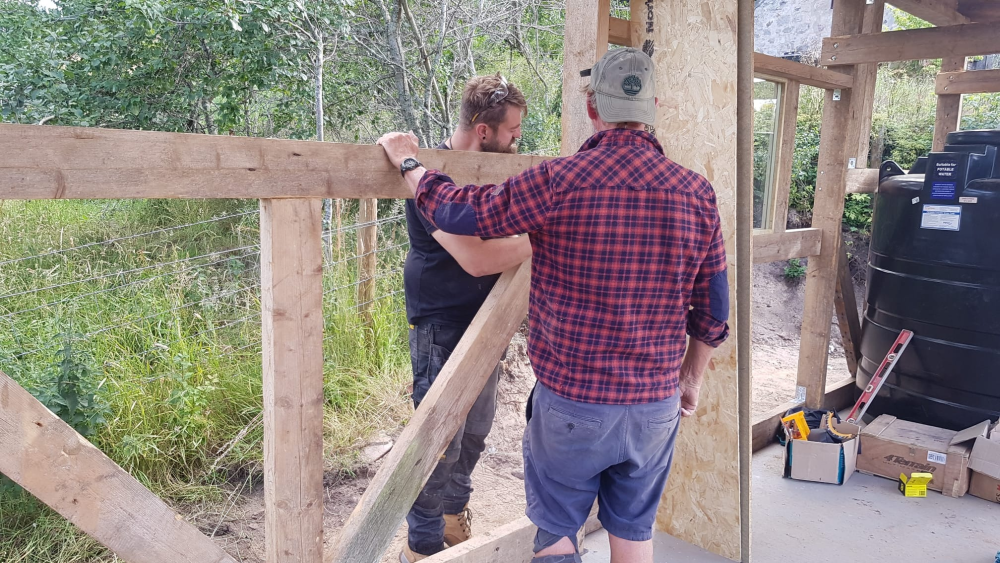

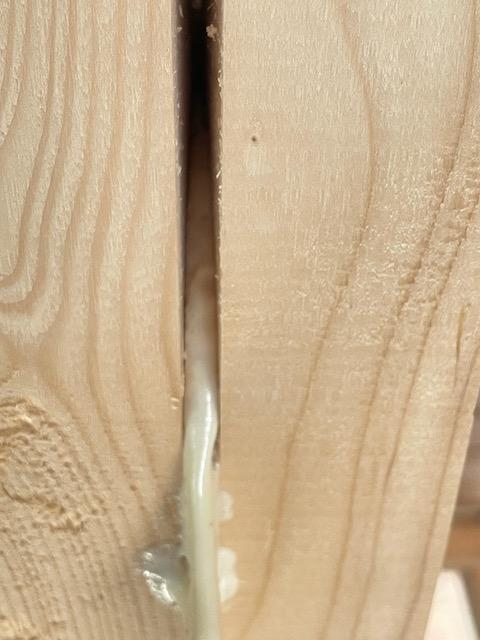
.jpg.c21f3ac78c9b7efd90cbdcb312744dc5.thumb.jpg.7adcad4c0e384f5ecd7d56b0618df6e5.jpg)

